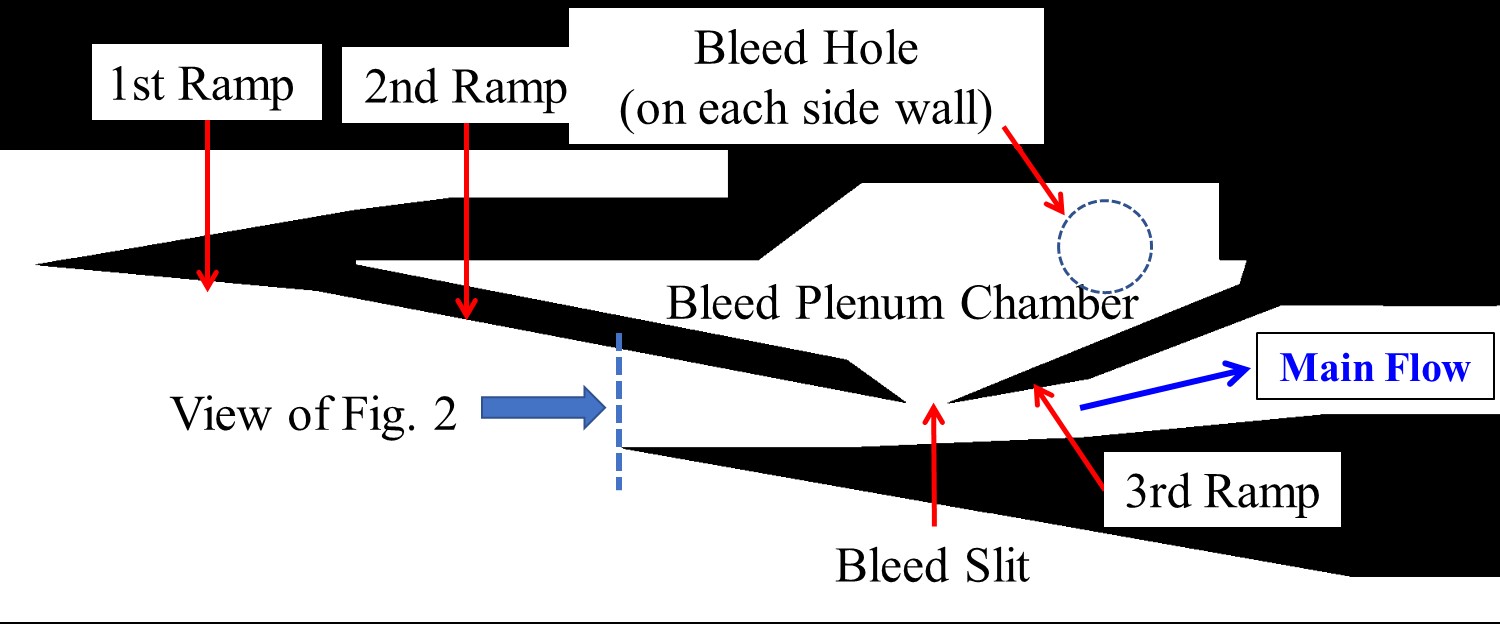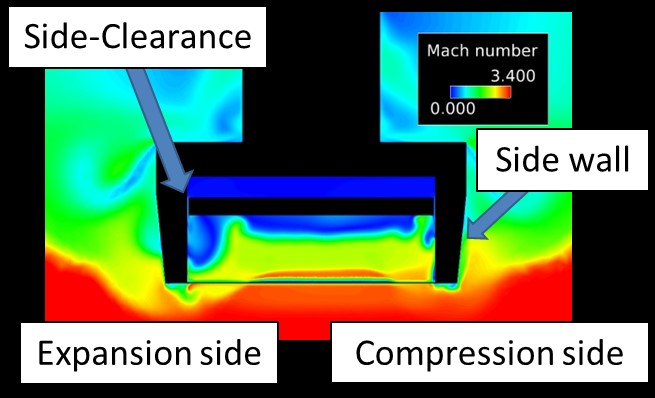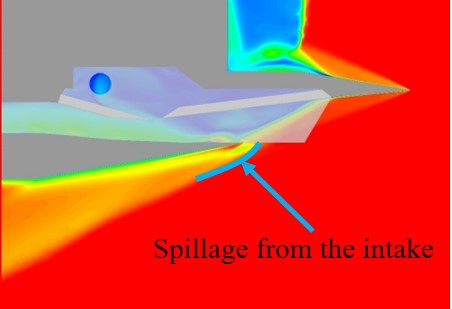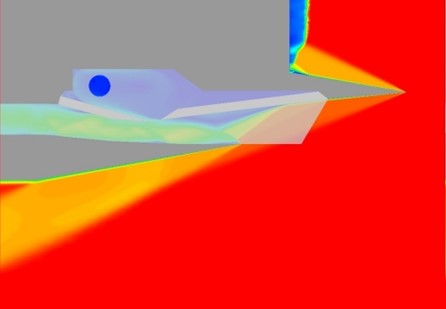Numerical Study of Supresonic Intake
JAXA Supercomputer System Annual Report April 2019-March 2020
Report Number: R19ETET10
Subject Category: Skills Acquisition System
- Responsible Representative: Takashi Aoyama, Aeronautical Technology Directorate, Numerical Simulation Research Unit
- Contact Information: Waseda university, Department of Applied Mechanics, Masakazu Sano(hisi-g-hibiki@wasagi.waseda.jp)
- Members: Masakazu Sano
Abstract
To discuss the flow inside of the intake and various phenomena, such as intake buzz, on the engine of High Mach Integrated Control Experiment, “HIMICO.”
Reference URL
N/A
Reasons and benefits of using JAXA Supercomputer System
Complex flow inside of intake can be simulated by large capacity of computational resourece.
Achievements of the Year
Japan Aerospace Exploration Agency (JAXA) has been promoting High Mach Integrated Control Experiment, “HIMICO,” as the first step for establishment of a Mach 5 class hypersonic aircraft. The purpose of HIMICO is to demonstrate the airframe/engine integrated control technology. Figure 1 is the enlarged view of engine for HIMICO. This intake has 3 ramps and air is compressed by oblique shock cauused by each intake. This intake also has a bleed slit between 2nd and 3rd ramps to bleed the boundary layer. The bleed air is emitted outside through two bleed holes opened on the both sides of the bleed plenum chamber. In this study, effects of sideslip on the intake for HIMICO is researched with CFD analysis. Fast Aerodynamic Routines, “FaSTAR”developed by JAXA is used as the calculation solver. Figure 2 is Mach number distribution of the entrance of intake. Figure 2 shows difference of flow between the right side and left side and is caused by pressure difference. There is a flow from the left side to the right side due to sideslip and this causes interference between the flow and the sidewall leading to the pressure difference. The left side is expansion side and the right side is compression side. This pressure difference also causes difference of amount of spillage from the bleed plenum chamber. In the expansion side, there is more spillage than the compression side and it covers the entrance of intake (Fig. 3.) This is an unstart condition. On the other hand, the center line of the intake shows start condition. This means there are two conditions at the same time in the intake, which is called “partial unstart condition.” These CFD results are grately helpful to understand the phenomenon caused by sideslip.
Publications
– Peer-reviewed papers
1)Masakazu Sano, Toshiya Yokoi, Hidekazu Yoshida, Tetsuya Sato, Hideyuki Taguchi, “3-Dimensional Numerical Simulation of Hypersonic Intake for Pre-Cooled Turbo Jet Engine,” Aerospace Technology Japan, 32nd ISTS papers
– Oral Presentations
1)Masakazu Sano, Toshiya Yokoi, Hidekazu Yoshida, Tetsuya Sato, Hideyuki Taguchi, “3-Dimensional Numerical Simulation of Hypersonic Intake for Pre-Cooled Turbo Jet Engine,” 32nd ISTS
Usage of JSS2
Computational Information
- Process Parallelization Methods: MPI
- Thread Parallelization Methods: N/A
- Number of Processes: 512 – 1024
- Elapsed Time per Case: 43200 Second(s)
Resources Used
Fraction of Usage in Total Resources*1(%): 0.71
Details
Please refer to System Configuration of JSS2 for the system configuration and major specifications of JSS2.
| System Name | Amount of Core Time(core x hours) | Fraction of Usage*2(%) |
|---|---|---|
| SORA-MA | 5,981,099.66 | 0.73 |
| SORA-PP | 27,357.80 | 0.18 |
| SORA-LM | 12,446.19 | 5.20 |
| SORA-TPP | 0.00 | 0.00 |
| File System Name | Storage Assigned(GiB) | Fraction of Usage*2(%) |
|---|---|---|
| /home | 476.84 | 0.40 |
| /data | 9,765.63 | 0.17 |
| /ltmp | 1,953.13 | 0.17 |
| Archiver Name | Storage Used(TiB) | Fraction of Usage*2(%) |
|---|---|---|
| J-SPACE | 0.00 | 0.00 |
*1: Fraction of Usage in Total Resources: Weighted average of three resource types (Computing, File System, and Archiver).
*2: Fraction of Usage:Percentage of usage relative to each resource used in one year.
JAXA Supercomputer System Annual Report April 2019-March 2020






